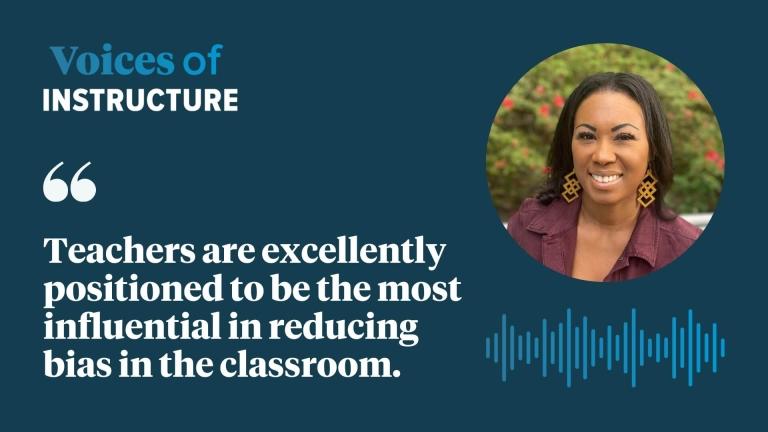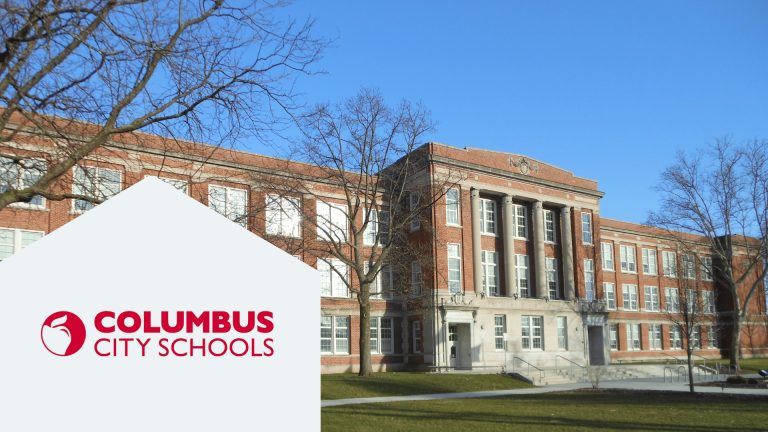
Bias occurs when people use limited, inaccurate, or stereotypical information to determine how they will interact with certain groups of people and to make decisions that impact certain groups of people. While some bias can be intentional, bias is often referred to as unconscious because people can be largely unaware of how their experiences, perceptions, and acceptance of stereotypes impacts their behavior, decision-making, and treatment of others (Dee & Gershenson, 2017). Nevertheless, unconscious bias can be just as harmful as conscious bias, if not even more so, especially when it impacts children in the classroom.
In the classroom, bias may manifest as a lack of representation in curriculum and learning experiences, disengagement of students from marginalized communities, limited means of expression, inconsistent expectations for student performance and achievement, disparities in student performance among various student groups, and much more. Unfortunately, unconscious bias disproportionately and negatively impacts students of marginalized groups (Chardin & Novak, 2021; Dee & Gershenson, 2017). It is difficult and often ineffective to ask individuals to suppress their biases, especially since many biases are unconscious. However, there are steps that teachers and school leaders can take to limit the impact that bias can have in schools and classrooms.
What Teachers Can Do
Teachers are excellently positioned to be the most influential in reducing bias in the classroom. One means of reducing bias is to ensure that grading practices are fair, equitable, and based on standards. Grades that are not based on standards are subject to teacher bias, such as participation grades, credit for bringing materials from home, or adherence to school policies. To reduce bias even further, provide students with rubrics for grading prior to completing assignments and use the rubric for assessment. This ensures that students know what the expectations are and how to meet them and that the grade assigned is only based on meeting stated expectations.
Additionally, teachers can prioritize inclusivity and a diversity of perspectives in curriculum content and lesson design where possible (Muniz, 2019). Teachers who can choose reading selections, videos, and activities when designing their lessons can purposefully include perspectives from various cultures, abilities, and perspectives. Students can also experience diversity and representation in the classroom when they are given a voice and choice. Teachers can provide students with opportunities to choose the curriculum content they will engage with, such as their reading material or the content medium, and how they will demonstrate mastery of objectives, such as through written, verbal, or performative means (Chardin & Novak, 2021).
Lastly, teachers can ask students questions and have an attitude of curiosity rather than assuming the "what" or the "why" about a student's background, behavior, or attitudes. For example, a teacher may ask students how they celebrate or recognize certain events during the year rather than assuming that sponsoring certain celebrations will adequately represent students. Encouraging students to share about themselves and what is important to them will help the teacher make choices and provide students with choices that reflect their needs and preferences (Chardin & Novak, 2021).
What School Leaders Can Do
One of the biggest impacts that school leaders can make on reducing bias in classrooms is creating and maintaining a school environment where all feel safe and respected, regardless of their identification or background. This includes empowering teachers to make decisions in the classroom that will meet students' needs whenever possible. School leaders can look for best practices in the classroom related to diversity, equity, inclusion, and social justice and amplify those practices so that they are implemented and celebrated school-wide.
Also, school leaders should hire a diverse staff, ensuring that their hiring and recruiting practices are free from bias and discrimination. Having a diverse staff on campus increases the likelihood that students will feel represented by the demographic makeup of the faculty and staff. A diverse staff also encourages various perspectives and ideas on campus, which leads to novel approaches to challenges and discourages adhering to the status quo.
Lastly, school leaders can provide training and resources for faculty and staff to help everyone become more aware of their own unconscious biases and learn how to implement strategies to prevent bias from impacting the classroom. School leaders should be sure to engage in these training sessions with their teams and model the behaviors and best practices they would like to see from their staff, such as demonstrating empathy, self-awareness, and having an attitude of curiosity and continuous learning.
If the goal of education is to provide each student with the opportunity to be successful in life, then each student deserves an education that is not jeopardized by limiting or destructive biases in the classroom. Educators in all positions, but especially teachers and school leaders, are instrumental in ensuring educational equity in the classroom and that all students have access to and can engage in rigorous learning. Every educator has the power and opportunity to create environments and foster relationships that support educational equity and social justice.
About the Author
Amber E. Williams has 18 years of experience in the field of education and has served in many leadership roles, including school principal. She has also worked in higher education as an instructional coach and as an adjunct instructor. She has a B.A. in English, an MBA, a master’s level certificate in Higher Education Teaching and Learning, and is pursuing a doctorate in educational leadership. Amber is an entrepreneur who has successfully coached aspiring school leaders to principalship and has helped entrepreneurs start and grow businesses. She is passionate about all things related to leadership and organizational management, and diversity, equity, and inclusion in the workplace and in the community. Amber is also a published author and public speaker; her most recent works are titled, “No Strings Attached: Addressing the Need for Equity in Black Schools’' (featured in Fighting the Good Fight: Narratives of the African American Principalship) and Women of Influence: Stories to Inspire, Encourage, and Empower the Professional Woman (a collaborative work). Amber currently serves as a Learning Consultant at Instructure, providing strategic consulting services to schools in the city of Houston.
Resources
Chardin, M. & Novak, K. (2021). Equity by Design: Delivering on the Power and Promise of UDL. Corwin: Thousand Oaks, CA.
Dee, T., & Gershenson, S. (2017). Unconscious Bias in the Classroom: Evidence and Opportunities, 2017. Stanford Center for Education Policy Analysis.
Muñiz, J. (2019). Culturally Responsive Teaching: A 50-State Survey of Teaching Standards. New America.
Related Content
 columbus_city_schools_1.png
columbus_city_schools_1.pngBlog Articles
![We can see their usage, but we want to know [which education tools] teachers feel are helpful in their environment.](/sites/default/files/styles/medium/public/image/2023-06/User%20Group%20Recap.png?itok=_3svfNBb) User Group Recap.png
User Group Recap.pngBlog Articles
 facommons.png
facommons.pngBlog Articles